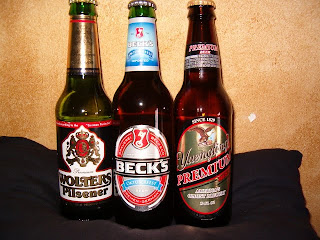Beer and Television:
Perfectly Tuned In
by Carl H. Miller
When Advertising Age magazine released its picks for the best 100 ad campaigns of the 20th century, it was no surprise that the world of beer advertising was well represented. After all, few can forget Bubba Smith and Dick Butkus arguing that eternal debate, "Tastes Great--Less Filling." Likewise, many a beer drinker can still whistle that infectious jingle, "Hey Mabel--Black Label," though the popular television commercials have not aired for 30 years. So, what made these and other classic beer commercials great?
Surely, from the beer maker's standpoint, a commercial's success can ultimately be judged by only one criterion: its impact on beer sales. But, we, the oft-jaded viewers, take a more visceral approach. More and more, we tend to grade commercials on their ability to, if only in passing, penetrate our popular culture. At their best, we induct them into our collective psyche, muse over them with friends and coworkers, and even add their lingo to our vocabulary (can you say "Whassup?").
Beer makers have been searching for the perfect beer commercial nearly since television exploded onto the American scene in the late 1940s. In those pioneer days, nobody--not the advertisers, not the ad agencies, not the TV stations--knew exactly what made for a good commercial. Indeed, the earliest beer commercials consisted of everything from live demonstrations of how to cook a Welsh rarebit using beer to the noisy rumble of a studio audience muddling through a rendition of the brewer's theme song.
With National Prohibition still fresh in memory, brewers were initially wary of peddling their beers on the air. Early critics of television saw the new medium as little more than an intrusion into peoples' living rooms, and many were concerned that beer ads might offend the viewers' sensibilities. Commercials that actually showed a person consuming beer, for example, were often deemed in bad taste. Beer ads were typically aired only in the late evenings, and Sundays were entirely off limits. Surveys were periodically conducted among viewers to determine whether any "moral backlash" might be caused by selling beer on television.















